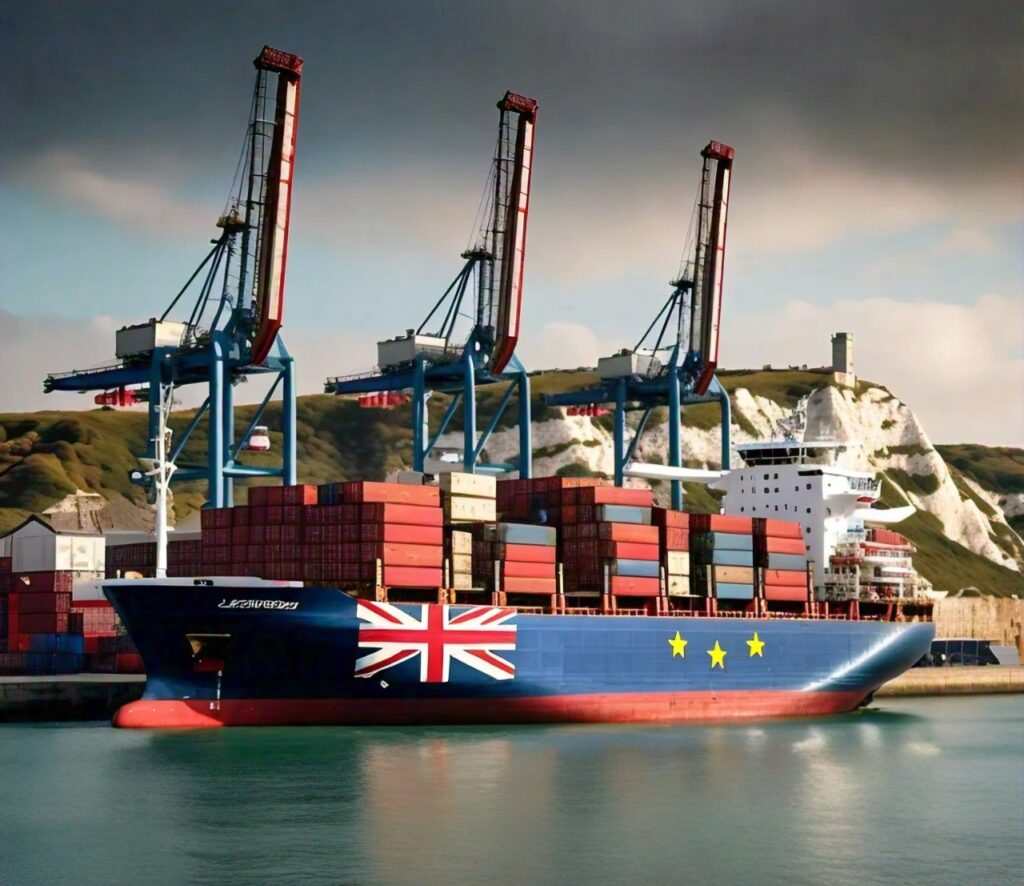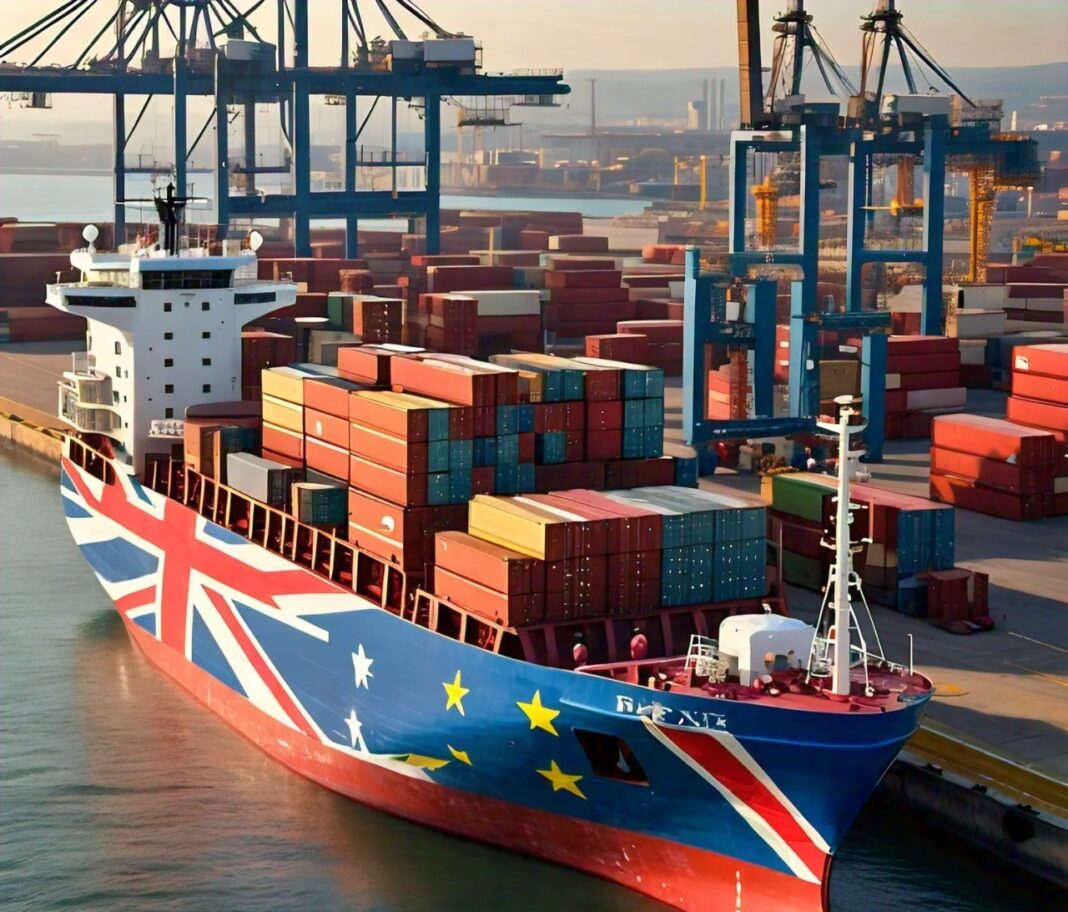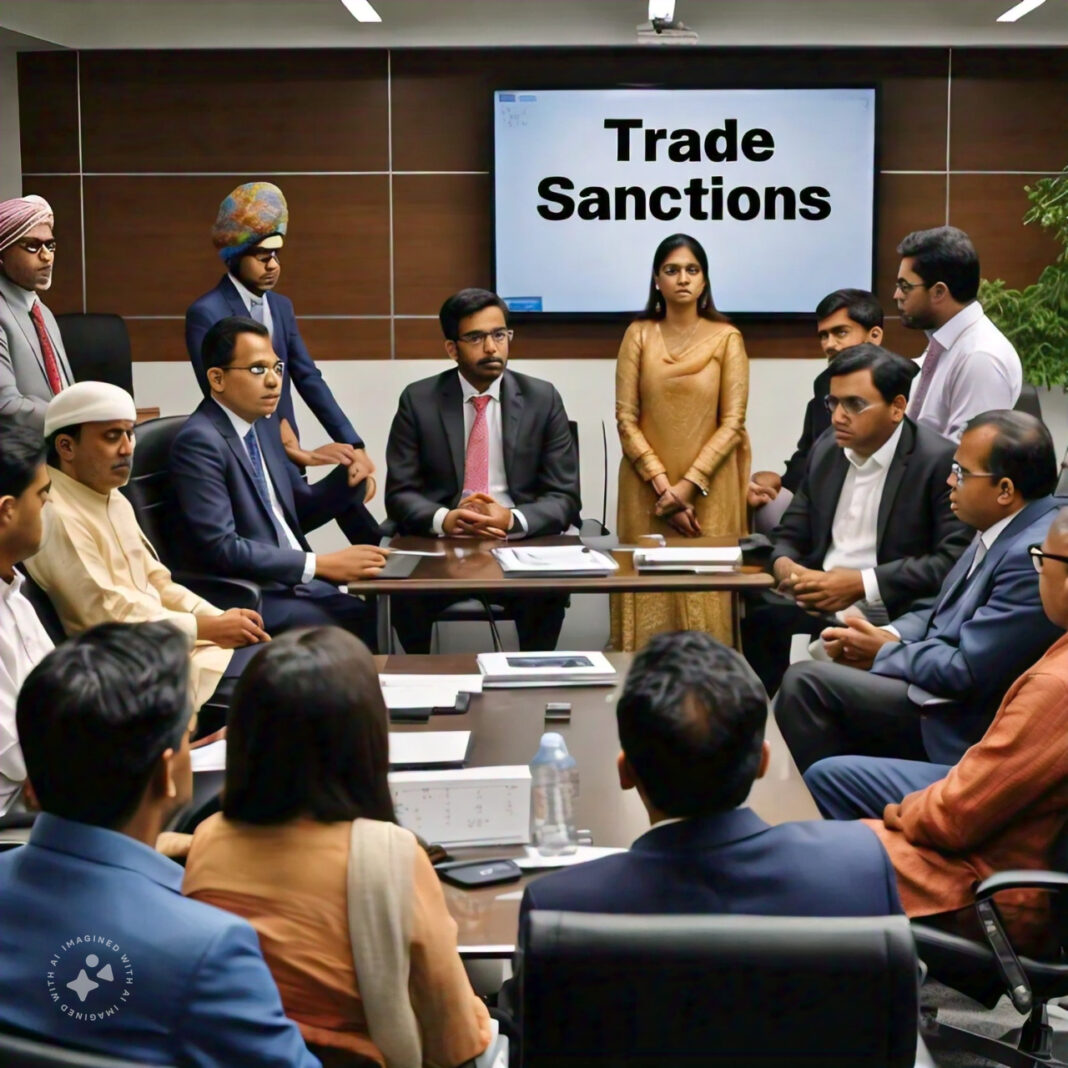The decision of the United Kingdom to leave the European Union, commonly known as Brexit, has brought significant changes to the economic landscape, particularly in trade relations between the UK and EU. This departure has introduced new tariffs, regulatory barriers, and shifts in trade flows, reshaping long-established economic ties. The impact of Brexit on trade has been far-reaching, affecting various sectors, influencing economic growth, and prompting both the UK and EU to navigate a complex new reality.
Brexit, the United Kingdom’s departure from the European Union, marked a significant turning point in European and global politics. Officially taking effect on January 31, 2020, Brexit ended the UK’s 47-year membership in the EU, triggering a complex process of disentangling economic, legal, and political ties.
The transition period, which lasted until December 31, 2020, allowed time for the negotiation of new trade agreements and the implementation of new regulations. The end of this transition period signified a new chapter in UK-EU relations, with profound implications for trade and economic interactions.
The primary objective of this article is to provide a comprehensive assessment of Brexit Trade Impact on the economy, focusing on trade flows, tariffs, and broader economic relations between the UK and the EU. By examining these aspects, the article aims to offer insights into how Brexit has reshaped trade dynamics, influenced tariff structures, and altered the economic landscape.
Overview of Pre-Brexit Trade Dynamics
Before Brexit, the UK was an integral part of the EU’s Single Market and Customs Union, which allowed for the free movement of goods, services, capital, and people. This membership facilitated seamless trade between the UK and EU member states, which collectively formed a significant portion of the UK’s trade partners. The UK’s participation in the EU’s trade agreements with non-member countries also enabled it to benefit from preferential trade terms globally.
The pre-Brexit trade dynamics were characterized by:
- High Trade Volumes: The EU was the UK’s largest trading partner, with a substantial proportion of UK exports and imports directed towards EU countries.
- Low Trade Barriers: The elimination of tariffs and reduced non-tariff barriers under the Single Market framework fostered efficient cross-border trade.
- Integrated Supply Chains: Many UK businesses were deeply integrated into EU supply chains, relying on just-in-time delivery systems and shared regulatory standards.
Post-Brexit Trade Impact Flow Changes
With Brexit officially altering the trade landscape, the UK has experienced significant changes in trade flows. Key developments include:
- Decline in Trade Volume: Data from the Office for National Statistics (ONS) and other sources show a decrease in the volume of trade between the UK and EU countries. This decline is attributed to increased trade barriers and uncertainties surrounding new trade arrangements.
- Shift in Trade Routes: There has been a notable shift in trade routes, with some UK businesses redirecting their exports to non-EU markets to bypass new customs and regulatory hurdles. This adjustment reflects a strategic pivot to mitigate the impact of Brexit-related disruptions.
- Sector-Specific Variations: Certain sectors have been more affected than others. For instance:
- Agriculture: The agriculture sector has seen a substantial impact due to increased export delays and additional paperwork required for customs checks.
- Manufacturing: Manufacturers dependent on EU supply chains have faced interruptions and increased costs, affecting production schedules and profitability.
- Services: The services sector, particularly financial services, has experienced changes in market access and regulatory alignment, leading to shifts in business operations and client relationships.
Brexit Trade Impact on Sectors
To illustrate the broader impacts of Brexit on various sectors:
- Agriculture: The imposition of new tariffs and non-tariff barriers has led to increased costs for farmers and exporters. Additionally, logistical delays at the border have affected perishable goods, exacerbating trade challenges.
- Manufacturing: Manufacturers have faced increased costs due to tariffs on raw materials and components, along with delays in supply chains. The disruption has led to production slowdowns and a reevaluation of sourcing strategies.
- Services: The services sector, particularly financial services, has had to navigate changes in regulatory frameworks and market access. Some firms have relocated operations or established new hubs within the EU to maintain access to European markets.
Tariff and Non-Tariff Barriers
Overview of Tariff Changes
One of the most immediate Brexit Trade Impact has been the introduction of new tariffs on goods traded between the UK and the EU. The end of the transition period marked the reimposition of tariffs on goods moving between the UK and EU, altering the previously tariff-free trade environment under the Single Market.
- New Tariff Regime: Under the Trade and Cooperation Agreement (TCA) reached in December 2020, the UK and EU agreed to zero tariffs and zero quotas on most goods, provided they meet the rules of origin requirements. However, this arrangement has not entirely eliminated the cost of trade.
- Rules of Origin: To benefit from tariff-free access, goods must satisfy specific rules of origin requirements, which stipulate that a significant portion of the product’s value must be derived from within the UK or EU. This requirement has introduced additional complexities and administrative burdens for businesses.
- Impact on Specific Goods: Certain goods, particularly those with complex supply chains, have faced increased costs and delays. For instance:
- Automotive Industry: The automotive sector has encountered challenges with rules of origin, leading to increased costs for components and disruptions in production.
- Agricultural Products: Although tariffs on many agricultural products are low, the impact of regulatory checks and additional paperwork has raised costs for exporters.
Also Read: The Impact of Trade Deficits on National Economies

Non-Tariff Barriers
In addition to tariffs, non-tariff barriers (NTBs) have significantly impacted trade between the UK and EU. These barriers include regulatory and administrative measures that can affect the flow of goods and services.
- Customs Checks and Border Delays: The reintroduction of customs checks has led to delays at the border, impacting the timely delivery of goods. This has been particularly challenging for perishable goods and industries reliant on just-in-time delivery systems.
- Regulatory Divergence: Differences in regulatory standards between the UK and EU have created additional hurdles. Businesses must navigate varying compliance requirements for product standards, safety regulations, and certifications, leading to increased costs and complexity.
- Increased Paperwork: The need for additional documentation and customs declarations has added to the administrative burden for businesses. This has particularly affected smaller enterprises that may lack the resources to manage the increased paperwork efficiently.
Brexit Trade Impact on Businesses
The combined effect of tariffs and non-tariff barriers has been substantial for businesses operating across the UK-EU border:
- Small and Medium-Sized Enterprises (SMEs): SMEs have been disproportionately affected by the increased complexity and costs associated with Brexit. Many smaller businesses have struggled to adapt to the new trade environment and have faced difficulties in maintaining competitiveness.
- Large Corporations: Larger companies with more resources have been able to manage the impact better but have still faced increased operational costs and adjustments in their supply chains.
- Adaptation Strategies: Businesses have employed various strategies to cope with the new trade environment, including adjusting supply chains, increasing stock levels, and exploring alternative markets. The shift towards non-EU markets and the reevaluation of sourcing strategies have been common responses.
Economic Relations Between the UK and EU
Trade Agreements and Negotiations
Since Brexit, the UK and EU have established a new framework for their economic relationship through the Trade and Cooperation Agreement (TCA), which came into effect on January 1, 2021. This agreement sets out the terms for trade and cooperation between the two entities, aiming to mitigate some of the adverse impacts of Brexit.
- Trade and Cooperation Agreement (TCA): The TCA provides for zero tariffs and zero quotas on goods traded between the UK and EU, provided that the goods meet the agreed rules of origin. This agreement is designed to facilitate continued trade while addressing the new regulatory and customs barriers that have emerged.
- Sector-Specific Agreements: In addition to the TCA, sector-specific arrangements have been established to address particular industries. For instance, agreements on fishing rights, aviation, and energy have been negotiated to ensure ongoing cooperation in these critical areas.
- Ongoing Negotiations: The UK and EU continue to negotiate additional agreements to refine and enhance their economic relationship. These negotiations cover areas such as financial services, data protection, and regulatory alignment, with the goal of addressing emerging issues and fostering closer economic ties.
Further Read: Why Emerging Markets Are the Next Frontier in International Trade

Economic Cooperation and Conflicts
Despite the TCA and other agreements, economic relations between the UK and EU have been marked by both cooperation and conflict.
- Areas of Cooperation: The TCA has facilitated ongoing collaboration in several areas, including scientific research, security, and education. Joint initiatives and funding programs continue to support cooperation in these fields, reflecting the shared interests of the UK and EU.
- Sources of Conflict: Tensions have arisen in areas where regulatory divergence and competing interests have led to disagreements. Notable conflicts include disputes over fishing rights, the implementation of the Northern Ireland Protocol, and concerns about state aid and competition rules.
- Impact on Business and Trade: These conflicts have created uncertainty for businesses operating between the UK and EU. Disputes and disagreements can lead to disruptions in trade and investment, affecting economic stability and growth.
Investment Flows
Investment flows between the UK and EU have been influenced by Brexit, with both positive and negative effects on cross-border investments.
- Foreign Direct Investment (FDI): The uncertainty surrounding Brexit and the new trade environment has led to shifts in foreign direct investment. Some businesses have redirected their investments to other EU countries to ensure continued access to the Single Market, while others have maintained or increased their investments in the UK.
- Cross-Border Ventures: The new trade and regulatory environment has prompted companies to reevaluate their cross-border ventures and partnerships. Companies are adapting their strategies to navigate the evolving landscape, with some seeking new opportunities in non-EU markets.
- Economic Impact: Changes in investment flows have had a significant impact on both the UK and EU economies. The redistribution of investment can influence economic growth, job creation, and innovation, shaping the future economic relationship between the two regions.
Broader Economic Implications
Impact on Economic Growth
Brexit has had a significant impact on economic growth in both the UK and the EU, with various factors contributing to changes in economic performance.
- UK Economic Growth: The UK economy has experienced slower growth post-Brexit, influenced by disruptions in trade, investment uncertainty, and changes in consumer behavior. According to data from the Office for National Statistics (ONS) and other economic reports, the economic slowdown has been attributed to increased trade barriers, higher costs for businesses, and the economic fallout from the COVID-19 pandemic.
- EU Economic Growth: The EU has also faced economic challenges due to Brexit, including disruptions in trade and investment flows. While the overall impact on the EU’s economy has been less pronounced compared to the UK, certain member states that are heavily dependent on trade with the UK have experienced economic slowdowns.
- Forecasts and Projections: Economic forecasts indicate that the long-term effects of Brexit on growth will depend on the ability of both the UK and EU to adapt to the new trade environment and implement effective policies to mitigate the adverse impacts. Projections suggest a gradual recovery as businesses and economies adjust to the new realities.
Labour Market Effects
Brexit has also influenced labor markets in both the UK and EU, with notable changes in employment patterns and labor mobility.
- Impact on Employment: The UK has seen shifts in employment patterns, with certain sectors experiencing labor shortages due to reduced migration from the EU. Industries such as agriculture, healthcare, and hospitality have been particularly affected by the lack of available workers.
- Labor Mobility: The end of free movement has affected labor mobility between the UK and EU, with increased visa and immigration requirements leading to difficulties in recruiting skilled and unskilled labor. This has implications for industries reliant on a flexible and diverse workforce.
- Policy Responses: Both the UK and EU have implemented policies to address labor market challenges. The UK has introduced new immigration systems to attract skilled workers and mitigate labor shortages, while the EU continues to navigate labor mobility issues within the Single Market.
Regional Economic Disparities
Brexit has highlighted and, in some cases, exacerbated regional economic disparities within the UK and the EU.
- UK Regional Impact: In the UK, regions with high levels of trade with the EU or significant manufacturing bases have been disproportionately affected by Brexit-related disruptions. For instance, Northern Ireland and areas in the North of England have faced unique challenges due to their economic reliance on EU trade and supply chains.
- EU Regional Impact: Similarly, certain EU member states and regions that have strong trade relationships with the UK have experienced economic strain. Countries such as Ireland, the Netherlands, and Belgium have seen impacts on their trade balances and economic growth due to Brexit.
- Policy Considerations: Addressing regional disparities requires targeted policy interventions and support measures to mitigate the adverse effects and promote economic resilience. This may include investment in infrastructure, support for affected industries, and targeted economic development programs.
Strategic Trade Policy Adjustments
To navigate the evolving trade landscape post-Brexit, policy makers should consider the following strategic adjustments:
- Enhanced Trade Agreements: Building on the existing Trade and Cooperation Agreement (TCA), further negotiations could aim to simplify trade procedures and reduce regulatory divergence. Expanding trade agreements to include additional sectors and addressing emerging trade issues can help facilitate smoother trade relations.
- Improved Customs Processes: Streamlining customs procedures and investing in digital solutions can reduce delays and administrative burdens. Implementing efficient customs processes and technologies will help businesses adapt to the new trade environment and improve overall trade efficiency.
- Support for Diversification: Encouraging businesses to diversify their export markets and sourcing strategies can mitigate the impact of trade disruptions. Providing support and incentives for companies to explore non-EU markets and adjust their supply chains can help reduce reliance on the EU.
Also Read: How Trade Sanctions Are Affecting Global Markets

Supporting Affected Sectors
Targeted support measures are crucial for sectors that have been disproportionately affected by Brexit. Key recommendations include:
- Sector-Specific Assistance: Implementing support programs tailored to the needs of specific industries, such as agriculture, manufacturing, and services, can help address the unique challenges faced by these sectors. This support may include financial aid, grants, and subsidies.
- Training and Resources: Offering training programs and resources to help businesses navigate new trade regulations and compliance requirements can enhance their ability to adapt and thrive in the post-Brexit environment. Providing guidance on rules of origin, customs procedures, and regulatory standards will be valuable.
- Infrastructure Investment: Investing in infrastructure improvements, such as transport and logistics networks, can help alleviate bottlenecks and improve the efficiency of supply chains. Enhancing infrastructure can support economic activity and mitigate the impact of trade disruptions.
Also Read: Trade Wars: The Future and What Lies Ahead
Conclusion
Brexit trade impact has profoundly impacted trade flows, tariffs, and economic relations between the UK and EU. The reintroduction of tariffs and non-tariff barriers has disrupted established trade patterns, leading to increased costs and logistical challenges for businesses. The introduction of new rules of origin requirements and regulatory divergences has added complexity to cross-border trade, affecting various sectors differently.
Economic relations between the UK and EU have been shaped by the Trade and Cooperation Agreement (TCA), which aims to balance trade facilitation with new regulatory realities. While the TCA provides for zero tariffs and zero quotas on most goods, it has not eliminated the complexities and challenges associated with Brexit. The ongoing negotiations and sector-specific agreements continue to address emerging issues and seek to enhance cooperation.
Broader economic implications include slower economic growth in both the UK and EU, shifts in labor markets, and heightened regional economic disparities. The impact on economic growth, employment patterns, and regional inequalities underscores the need for targeted policy responses and strategic adjustments.






